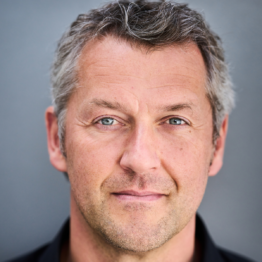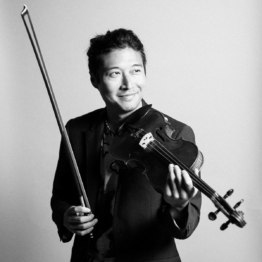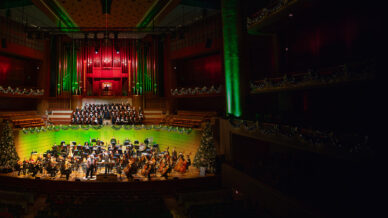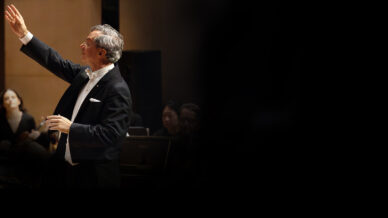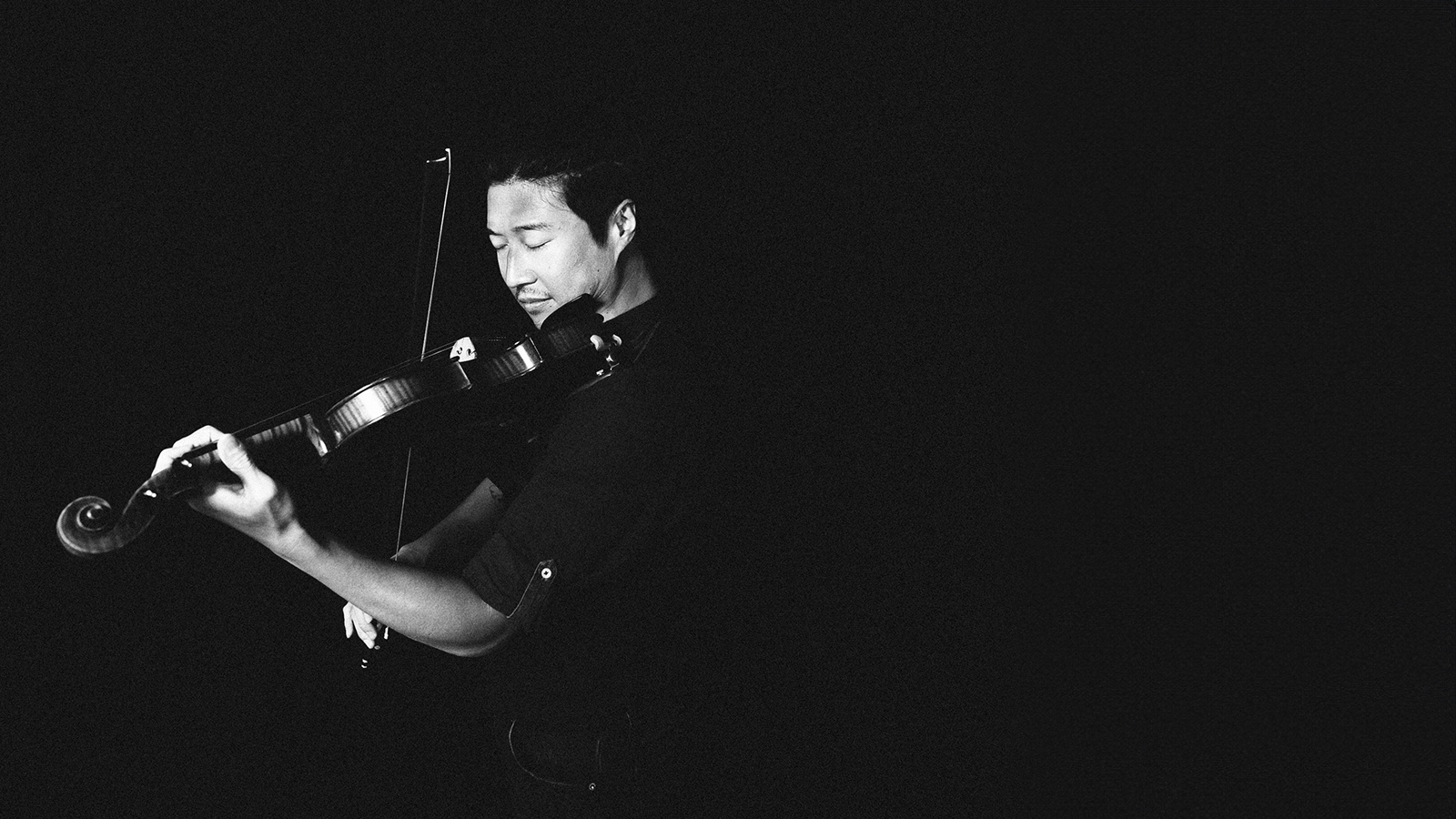

Dvořák’s New World Symphony
November 29 – December 1, 2024
Take Advantage Before It’s Gone — No Fees Until November 24th! No promo code needed at checkout.
MARKUS POSCHNER conducts
CHARLES YANG violin
KRIS BOWERS For a Younger Self
DVOŘÁK Symphony No. 9, “From the New World”
Led by German conductor Markus Poschner, Dvořák’s most-beloved symphony, the Ninth, beguiles you with cascades of hummable tunes, bold horn calls and suggestions of African- and Native American melodies he heard during his American sojourn. But always within earshot is an expression of homesickness for his native Bohemia. Making his DSO debut, Charles Yang, member of the wildly popular string ensemble Time for Three, performs Kris Bowers’ For a Younger Self. This Concerto meant “finding a way to maintain balance and inner peace in this chaotic and troubling world,” the Emmy Award-winning composer says. Best known for his film scores The Green Book, Bridgerton, and King Richard), For My Younger Self is the genre-bending Black composer’s first concert work for orchestra.
Join us for a special pre-concert talk with Assistant Conductor Shira Samuels-Shragg! The talks will take place from Horchow Hall starting at 6:30pm on Friday and Saturday and 2:00pm on Sunday.
Program Notes
by René Spencer Saller
The Composer Speaks
“When I was first commissioned to write this Violin Concerto, I began speaking with Charles [Yang] about different ideas to explore. Both of us having moved to New York as teenagers to attend Juilliard, we reminisced about the feeling we had adjusting to a new and incredibly overwhelming environment, and how tough it can be as a young person to overcome fear, stress, self-doubt, etc. At the same time, I couldn’t help but feel a similar sense of excitement and being overwhelmed as I embarked on this commission. Growing up in Los Angeles, as a kid, having a concert work of mine performed on the Walt Disney Concert Hall stage seemed like something I could only dream about.
“[That] space and [that] part of downtown L.A. has been an integral part of my young life. I started piano and theory lessons just across the street at the Colburn School the day they opened at that downtown location in 1998. I competed in the Spotlight Awards at the Dorothy Chandler Pavilion (as well as had my high school graduation there), and I performed at Walt Disney Concert Hall with my high school jazz band. Being in these halls and on these stages made me incredibly excited about the possibilities for my future and my own potential as a musician. It helped me envision myself with a career doing this.
“That being said, I was rarely in the audience for concerts in these spaces, and when I look back on my relationship with classical music, I always wish I had appreciated it more. On some level, I felt like I didn’t belong, and although I studied classical piano alongside jazz until graduating high school, it seemed like classical music just wasn’t ‘for me.’ As a young Black boy, I didn’t see myself in the audience members, the classical composers that were presented, or even in the other students I was in school with. Not seeing myself in these spaces helped me create an internal narrative that I didn’t belong.
“Film music began to change that for me. It wasn’t until I developed a deep love and appreciation for the film scores of composers like John Williams, Danny Elfman, Quincy Jones, John Powell, Howard Shore and Jerry Goldsmith that I began listening back to classical and orchestral music, and really seeing/hearing where they were coming from. All of a sudden, the music of Ravel, Prokofiev, Beethoven, Brahms, Steve Reich and others came alive for me, and although this field wasn’t much more diverse, it was a profound inspiration to see how these composers combined their personal musical styles with their classical training. Not to mention that at times, great storytelling can transcend race and gender, and I still found inspiration in the heroes of the films I watched as a kid.
“This being my first concert work for orchestra, the shape and sound of the piece began to unravel throughout the composition process. Having learned so much about storytelling as a film composer, I wanted to see if I could convey a narrative through the shape and pacing of this piece. Using Charles and his violin as the protagonist, I wondered if there was a way for me to follow the format of The Hero’s Journey while at the same time adhering to the rules and traditions of the violin concerto.
“When we meet our hero at the beginning of the piece, he is somewhat melancholic and timid, and pretty soon we feel he is almost being pushed around by the orchestra. The orchestra represents life in this way, and can be both the bully and the mentor. So we go back and forth between these moments of chaos and anxiety, to these gentler sections that represent the pining for tranquility, nostalgia, love, etc.
“The second movement is a moment for our protagonist to finally have that moment of peace and reflection. It’s in this movement that we hit our ‘Mid-Point,’ and our hero finally takes control of the narrative. He is now driving the orchestra, flowing through with much more ease and acting from a place of love rather than fear.
“Lastly, we reach the climactic final movement in which the hero and what he’s learned are put to the test, and the ease in which he exhibits his self-confidence and assuredness amid the chaos is on full display.
“On some level, writing this piece became a way to send a message to the younger version of myself, in terms of finding a way to maintain balance and inner peace in this chaotic and troubling world, and also as a way to encourage and celebrate my curiosity and love for so many types of music. I am so thankful to the American Youth Symphony and the LA Phil for this opportunity, which has helped me rewrite my own narrative that someone like me doesn’t belong in this space; performances like this can continue inspiring other young composers that have ever felt like they don’t belong.” —Kris Bowers
In September 1892, Dvořák, his wife, and two of their six children set sail for New York City, where they spent most of the next three years. Unlike so many other Czech immigrants before and after them, they weren’t hoping to start a new life in the New World. Internationally successful, the 51-year-old composer was lured to the United States by Jeannette Thurber, a wealthy philanthropist and Paris-trained musician. She had already successfully lobbied Congress to establish the National Conservatory of Music, her brainchild and life’s mission. Now she wanted Dvořák to serve as its director. He was reluctant at first, but the proposed salary of $15,000—more than 20 times what he had been earning at the Prague Conservatory—was too tempting to refuse.
When he wasn’t teaching or composing, the celebrated Bohemian strolled through Central Park and hobnobbed with other European émigrés in local bars and cafés. He enjoyed his work, but he was homesick. He spent his first American summer break in Spillville, a small farming community in northeastern Iowa populated mainly by Czech immigrants. Dvořák, the son of a butcher, was delighted to learn that the Spillville butcher shared his surname.
New World, New Sounds
The Ninth Symphony was the first of several works that he composed entirely in the United States, from preliminary sketches to final orchestration. Although he urged his National Conservatory students to explore indigenous musical forms, he had at that point heard only a smattering of American folk songs, notably the Negro Spirituals that his assistant Henry Burleigh sang for him. Dvořák was also fascinated by Henry Wadsworth Longfellow’s popular poem “The Song of Hiawatha,” a highly Romantic (and wildly inaccurate) depiction of Native American life.
So just how American is the New World symphony? Although many listeners swear that they hear snatches of such classic folk tunes as “Turkey in the Straw,” “Three Blind Mice,” and “Swing Low, Sweet Chariot,” the composer’s own remarks on the subject are contradictory. While writing the Ninth, he declared that “the influence of America can be felt by anyone who has a nose.” But five years after his departure from the United States, he told a conductor preparing the Ninth for performance that he should “leave out the nonsense about my having made use of American melodies. I have only composed in the spirit of such American national melodies.” Elsewhere, he described all the compositions he wrote in the United States as “genuine Bohemian music,” claiming that the Ninth’s title was meant only to describe “impressions and greetings from the New World.”
A Closer Listen
Questions of authenticity aside, the Ninth is Dvořák’s most famous symphony for simple and universal reasons. It is immensely satisfying, with sticky tunes and a sturdy structure. The orchestration is luscious but judicious; the sonorities are imaginative and affecting. The four movements are unified by the cyclical nature of its themes, which are woven throughout the work in myriad patterns and colors.
The first movement, a moody Adagio, alternates heroic Wagnerian grandeur with jolly, almost fiddle-like interludes fringed with lissome winds. The Largo showcases the iconic English horn theme, which is echoed and transformed by other instrument groups; at the midpoint, a new theme burbles up in the winds, a brief birdsong idyll. The hectic Scherzo, a mood- and meter-shifting succession of dance forms, marshals scurrying strings, galloping cadences and jingling triangle. The finale brings it all back home, thematically and emotionally, synthesizing all the preceding material. As promised by the Allegro con fuoco tempo indication, it is fast and fiery, but it also offers moments of surpassing sweetness.
The December 1893 premiere at Carnegie Hall by the New York Philharmonic was an unqualified triumph. Audience members applauded after each movement and even compelled the composer to rise with their loud cheers at the conclusion of the Largo.
